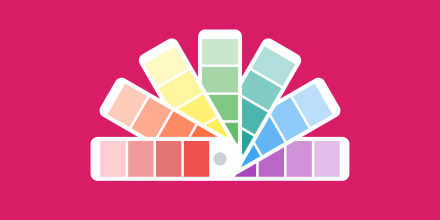
Color plays a fundamental role in both the world of printing and digital media, serving as a powerful tool for conveying information, aesthetics, and emotion. However, the way colors are managed and reproduced in these two realms is distinct and driven by different technologies and principles.
Process colors are known as CMYK colors or 4C (four-color). Spot colors are usually defined by the Pantone library, or Pantone Matching System (yes, that’s PMS for short). RGB colors are used for on-screen viewing and stand for Red Green Blue.
Process colors are the four printing colors used in the majority of full-color pieces. The inks used in four-color printing are cyan, magenta, yellow, and black, or CMYK. (“K” is used for “black” to avoid the confusion that “B” could represent “blue”).

By combining varied amounts of these four inks, a wide range of colors can be simulated. If you look at a 4C printed piece with a magnifying glass, you can actually see the individual dots of color. To create green, for example, dots of cyan and yellow would be used. At normal viewing distance, the dots merge together and the eye sees green. All full-color photographs require 4C process colors when printing.
Spot colors are solid inks (like cans of paint that you’d use to paint your house), not a simulation made of other colored dots. Spot color printing is used primarily for matching a color exactly, such as a company logo on stationery.

A spot color is often chosen along with black (although sometimes with a second spot color) and the result is a two-color (2C) print run. Two-color printing tends to be less expensive than four-color printing, but not always (digital presses can not use Pantone inks, and low-volume print runs are cheaper on digital presses). Other reasons a spot color may be used are when a page has heavy coverage of a single color, or when colors are required that fall outside the spectrum that CMYK can reproduce accurately. Specialty inks such as metallics and day-glow fluorescents also require spot colors. The ’70s were good for the spot color industry.
RGB colors, like CMYK colors, are made up of tiny dots that when viewed at a normal distance simulate a wide spectrum of colors. However, RGB colors are made of red, green, and blue. A computer monitor or a digital camera both use RGB dots to simulate the colors we see every day with the human eye.

Except for low-cost office color printers, RGB is usually avoided when printing. Photos and graphics specifically for websites and PowerPoint presentations (viewed on-screen only) should be created in RGB colors.




